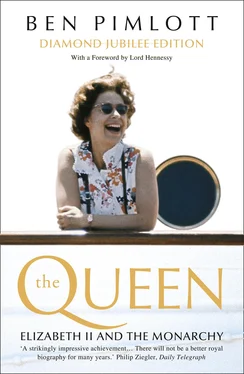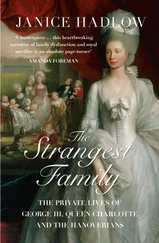I declare before you all that my whole life, whether it be long or short, shall be devoted to your service and the service of our great Imperial family to which we all belong, but I shall not have the strength to carry out this resolution alone unless you join in with me, as I now invite you to do. I know that your support will be unfailingly given. God help me to make good my vow and God bless all of you who are willing to share in it. 52
What was it in this nun-like promise – about a crumbling Empire that in a few years would cease to exist – that captured the imagination of those who heard it? It was partly the youth of the speaker, the cadences of the delivery, and the confidence of the performance; partly the knowledge that a royal betrothal was imminent; partly the earnestness of the sentiment in an earnest decade.
In fact, though the Princess may not have known it, the message was highly political – directed at several distinct audiences. One of its aims was to help Smuts and the cause of English-speakers in South Africa. It was designed to help Uncle Dickie, as Viceroy, in his task of seeking to retain Indian friendship within a Commonwealth that would no longer be able to differentiate between self-governing white dominions, and imperially ruled black colonies. At the same time, the speech was for domestic consumption in Britain – it offered a population that was exasperated by restrictions, and worn out after the added hardships of a terrible winter, the bromide of Commonwealth and imperial ideals. Finally, it was a royal speech, written by a courtier for a royal anniversary: it reaffirmed the British Monarchy as the one reliable link in an association of nations and territories whose ties had become tenuous, because of war, British economic weakness, and nascent nationalism.
But it was the Princess herself, and the feeling she conveyed as an individual, which, as it was said, brought ‘a lump into millions of throats’. 53For a moment, the Empire seemed as one. In South Africa, the English-speakers could not have felt prouder, and even the Afrikaners acknowledged the effect. ‘I feel . . . a bit exhausted by the tremendous success of the whole thing,’ Lascelles wrote to his wife, as he packed his bags in Cape Town, ‘and for Princess Elizabeth’s speech, on which I had lavished much care.’ 54A few days later, as the Vanguard sailed for home, the King’s private secretary was able to reflect a little more on his handiwork. The tour, he concluded, had amply achieved its most important objective, as far as the Court was concerned, of demonstrating the value to South Africa of the British Monarchy. The biggest revelation had been the blossoming of the King’s elder daughter:
From the inside, the most satisfactory feature of the whole business is the remarkable development of P’cess E. She has got all P’cess Marg’s solid and endearing qualities plus a perfectly natural power of enjoying herself . . . Not a great sense of humour, but a healthy sense of fun. Moreover, when necessary, she can take on the old bores with much of her mother’s skill, and never spares herself in that exhausting part of royal duty. For a child of her years, she has got an astonishing solicitude for other people’s comfort; such unselfishness is not a normal characteristic of that family.
In addition, he noted with approval, the Princess had become extremely business-like: she had developed the ‘admirable technique,’ if they were running late, ‘of going up behind her mother and prodding her in the Achilles tendon with the point of her umbrella when time is being wasted in unnecessary conversation’. When circumstances required, she also ‘tells her father off . . .’ Both princesses must have found moments in the tour very dull, Lascelles concluded. But, on the whole, both had been ‘as good as gold’. 55
Lascelles’s optimism about the impact of the tour turned out to be misplaced. Indeed, if the aim had been to save both Smuts and the Crown in South Africa, it was a double failure. The following year, Smuts was ousted by Malan and the isolationists, and a new government adopted a programme of racial laws that weakened still further the Commonwealth links of the Union, and led eventually to South Africa’s withdrawal from the association thirteen years later. Yet it would be wrong to dismiss the trip as politically negligible. In a way it was a marker: remembered, with nostalgia and also hope, for the affirmation it had provided of more elevated values than those later imposed. The memory was still there when, nearly half a century later, Nelson Mandela’s democratic republic re-applied for Commonwealth membership. There was also a directly personal effect. Elizabeth’s first tour, which was also one of her longest, profoundly affected her outlook, helping to establish a Commonwealth interest and loyalty that became a consistent theme of her reign.
AT HOME, every paper carried a birthday profile of the Heiress Presumptive, in each case seeking to meet a public desire for as happy and as rosy a picture of the Princess as the meagre details available about her short life permitted. Descriptions highlighted the qualities an idealized princess ought to have, alongside those she actually did. Since it was an egalitarian, democratic era, much ingenuity was exercised in presenting her as a people’s princess.
The Prime Minister set the tone. The simple dignity and wise understanding of the King’s elder daughter, he declared, had endeared her to all classes. 56The sentiment was echoed, universally. The News Chronicle helpfully noted that, unlike a male heir, who would have been created Prince of Wales and a member of the House of Lords, she was technically a commoner, and had appropriately simple tastes in personal adornment. 57 The Times saw the point as more than technical. Elizabeth belonged to a Monarchy that had become ‘social and unpretentious,’ it declared, acting as ‘the mirror in which the people may see their own ideals of life’. From this firm base, the Princess would provide the rising generation with a model that was progressive in the widest sense, ‘standing for the aspirations of the men and women of her own age, for everything that is forward-looking, for all the effort that seeks to build afresh.’ 58
Such a ‘representative’ view of royalty, of course, begged a few questions: did being ‘representative’ mean representing the interests and ideals of ordinary young people in a symbolic sense, or actually being like them? Dermot Morrah, always ready with a loyal argument, claimed that the Princess was as representative in the second sense as in the first – and that her representative status came from the happy chance of her intellectual and cultural limitations. Like her father and grandfather, he pointed out, she was ‘normal’ – that is, average – in capacity, taste and training. The result was an Heiress Presumptive with normal, average values. That she was ‘simple, warm-hearted, hard-working, painstaking, cultivated, humorous and above all friendly’ helped to make her ‘a typical daughter of the Britain of her time’. 59
Like the trumpeted ‘simplicity’ of the Princess’s pre-war upbringing, however, the reality was somewhat different. Most of the ‘normality’ of her early adulthood was a product of the ambition of observers to present her as somebody with whom genuinely simple and normal people could identify. The only hard, publicly available evidence was that she was untypical – in particular that she was rich and about to become richer, with a Civil List income rising from £6,000 per annum to £15,000 on her majority, a sum over which she would have full control. She was also untypically, even uniquely, famous: one newspaper suggested that the twenty-one-year-old Princess was ‘unquestionably the most publicized young woman in the world,’ easily out-distancing Shirley Temple, her nearest rival. 60
Читать дальше












